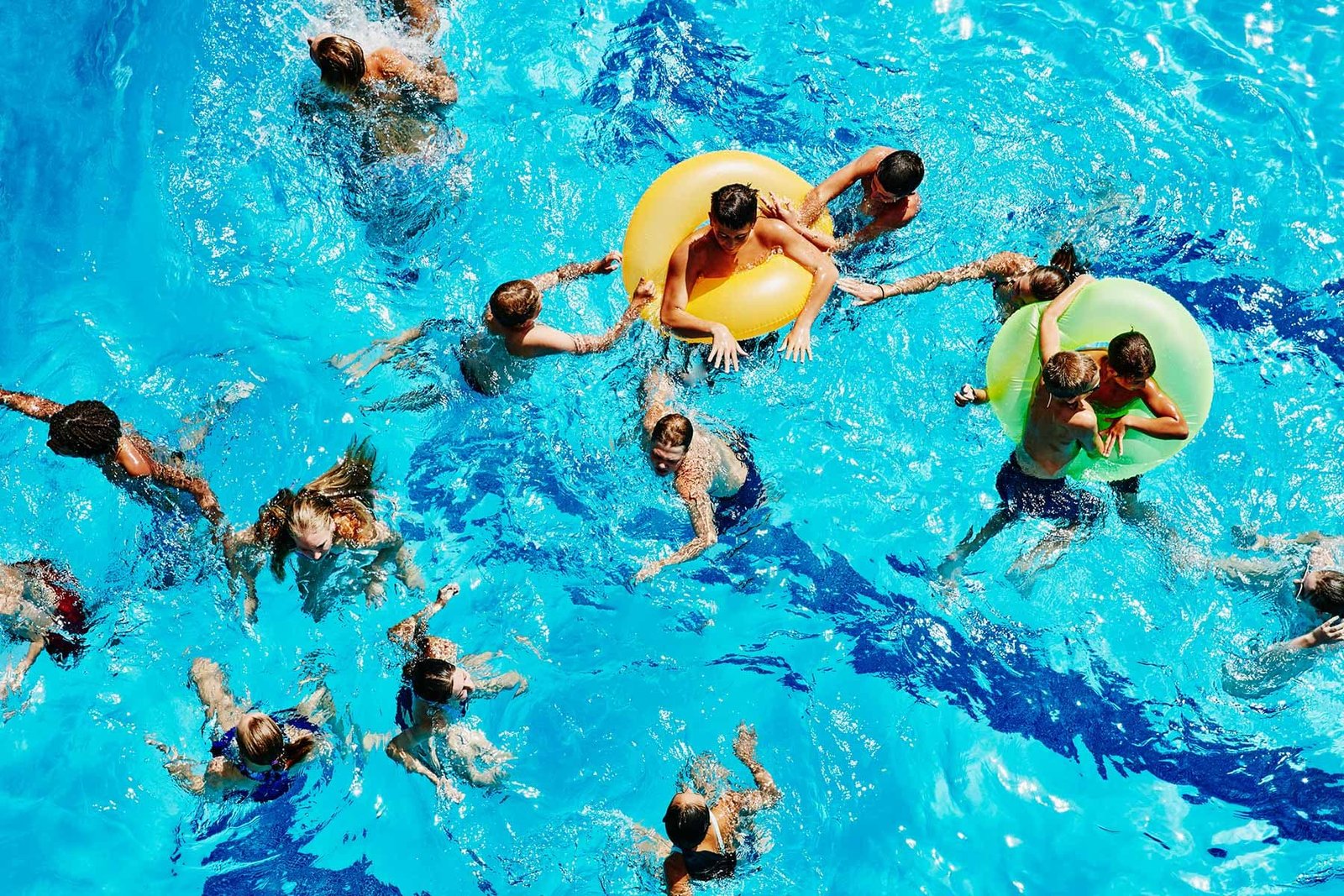On a summer morning in 2013, Jeffrey Brown dropped off his 6-year-old son, Grant, at a local summer camp in Chapel Hill, North Carolina. The family had just come into town from Cambridge, Massachusetts, to visit friends. In addition to a week filled with barbecues, a Durham Bulls baseball game, and other summer fun, Grant was excited to attend a neighborhood day camp.
A few hours later, Brown got the call.
“They said that Grant was receiving CPR after being found in the pool,” Brown says.
But the CPR would come too late, and Grant died soon afterward.
Brown had been hesitant about “pool time” at the camp because Grant wasn’t a strong swimmer. He only agreed after camp administration assured him that an on-duty lifeguard watched the pool at all times and that children who couldn’t swim were confined to shallow water.
Video surveillance would later show this to be partly true, says Brown. There was a lifeguard on duty – a single lifeguard to watch a pool crowded with about 60 children. Counselors tried to help, but in a pool filled with that many children, it was hard to keep up with everyone, and Grant found his way into deeper water.
The video shows Grant desperately bobbing up and down, clearly struggling for air. A camp counselor stands close by, though turned in the other direction, for over 2.5 minutes.
Grant spends another 3.5 minutes at the bottom of the pool before two fellow campers notice him and pull him up.
“I can’t explain to you the gut-wrenching, ripping agony of having to let go of your child when you were expecting to see him that afternoon.”
It’s More Common Than You Think
If you think this is just a freak accident, says Brown, you’re mistaken.
Drowning is the No. 1 cause of death for children 1 to 4 years old and the No. 2 cause of death for those 5 to 9 years old.
Careful supervision of young kids around water, preferably by certified lifeguards, is essential to keep kids safe, says William D. Ramos, PhD, an aquatics expert with the American Red Cross Scientific Advisory Council.
“When kids are near water, they require a high level of supervision that’s dedicated, constant, and without any distractions,” Ramos says.
Minority children in particular may be at higher risk in swimming pools. Though drowning deaths have gone down overall, racial and ethnic disparities persist. Between 1999 and 2019, American Indian/Alaska Native kids drowned at twice the rate of white kids.
Between 1999 and 2010, Black American children ages 5 to 19 were more than five times more likely to drown in pools. The rate was highest for 11- to 12-year-old Black Americans, who were more than 10 times more likely to drown than white children the same age.
But the numbers don’t always tell a clear story. For example, Asian/Pacific Islander kids are significantly less likely to drown than average between ages 1 and 4. Then between ages 5 and 19, their odds of drowning are lower than average.
The reasons for higher drowning rates in certain groups are complex, says Ramos.
Part of it may be early access to pools and proper swimming instruction. But it’s also cultural and generational. If parents don’t know how to swim, then they’re unlikely to teach their kids, he says.
Why? Social history can sometimes shed some light on the subject. Black Americans in particular were often barred from pools in the “white only” clubs and public facilities that offered safe swimming and swim instruction, according to Victoria Wolcott, PhD, University of Buffalo history professor and author of Race, Riots, and Roller Coasters. Where Black Americans did gather to swim in earlier decades, objecting whites were known to throw nails, bleach, and even acid into pools, Wolcott says. In the 1940s, there were race-based riots in large swimming pools in Los Angeles, St. Louis, Baltimore, and Washington, DC.
So it is perhaps understandable that certain American ethnic groups are less than enthusiastic about heading off to the pool to learn to swim, says Wolcott.
The Threat Is Biggest at Home
Almost 90% of drownings occur in “home pools.” That can include your own pool or that of a family member, friend, or neighbor.
It happens more often when there’s no safe barrier like a locked fence around a pool, or when the barrier isn’t working. Kids can also escape from the house through unlocked doors, windows, and even pet doors to get to the pool.
Drowning isn’t a “Hollywood event,” says Ramos. What he means is that it can happen without fanfare, with terrifying speed and in almost complete silence.
“The best way to prevent it is by avoiding any and all unsupervised access to water.”
That means ALL access – including inside the home. Every year, around 90 children drown inside the home, two-thirds of them in the bathtub. It can happen in as little as 2 inches of water.
The tragedy, says Ramos, is that these are all largely preventable deaths.
What You Can Do
With summer vacation close at hand, parents need to be extra vigilant, Ramos says. Here are some things you can do:
- Always supervise your children around water, no matter how well they can swim. If you can’t watch them, be sure there are enough responsible adults that can. Avoid distractions like reading or using your phone as you watch.
- If you’re in open water, like an ocean, lake, or river, you should always be in a Coast Guard-approved life jacket. Other products aren’t tested as well to ensure an upright position while floating on the water. You can also use life jackets on weaker swimmers of any age, whenever they’re in or around water. Floating toys are not safety devices.
- Get formal swimming lessons for children at as young an age as possible from a reputable and certified instructor. The American Red Cross or your local YMCA are a good place to start. But remember that your children will still need close and constant supervision around the water. “We shouldn’t depend on our kids to save themselves,” says Ramos.
- Build a fence to fully enclose your pool with a self-latching gate that separates it from the house. When not in use, remove all toys from the area that might attract children. If your child is going to be at another home, ask about protected pool access. Pool covers are not a safe replacement for a fence, according to the American Academy of Pediatrics. The main reason for this is that they require opening and closing for each use and once open, any child could wander into the area. There also are problems with standing water on top of the cover and possible entanglement in certain types of covers.
- Learn CPR. It can save someone’s life in the time it takes for paramedics to arrive. Contact the American Red Cross or American Heart Association for training courses in your area. Some courses also may be available online.
Remember, drowning can happen anywhere, including at supervised summer camps like Grant’s. But there are some things you can do to try to keep your kids safe.
Start by trying to find out the legal standards for water supervision at camps or public pools in your area. These standards vary widely by state.
North Carolina, where Grant attended day camp, does not require a lifeguard or any adult to watch the body of water where kids swim. New York and Massachusetts do require water supervision. Other states, like South Carolina, don’t regulate day camps at all.
Even if there are regulations, they may be too lax or the camp may not be following them.
In Grant’s case, a single lifeguard was not enough for a pool full of 60 kids.
“If at all possible, take a day to observe the camp before allowing your child to attend. And don’t be afraid to ask questions,” Ramos says.
How big is the pool? How many kids are in it at any one time? How many lifeguards are there? How well-trained are they? How is access guarded on off hours?
These questions, says Ramos, are a matter of life and death because having enough certified lifeguards on duty is critical to keeping kids safe.
How can you tell when it’s safe? It depends on the size and depth of the pool as well as the skill level of all of the other swimmers, according to the American Red Cross.
One good rule of thumb is to make sure that each lifeguard can clearly see all parts of their “zone” – the area for which they’re responsible. A second rule is to make sure that there are enough lifeguards for the number of swimmers. Some states have set their own specific limits. Both New York and Massachusetts, for example, require one lifeguard per 25 swimmers at a day camp.
Since his son’s death, Brown has been lobbying the state of North Carolina to require that all camps require enough lifeguards on duty at all times.
“Unless the camp’s water policy is ironclad with enough certified lifeguards on duty to safely watch the water, don’t leave your child,” he says.
He wishes he hadn’t left his son at day camp on that tragic day. He wishes there had been sufficient supervision at the camp pool. He wishes he had asked more questions about it.
He wishes he could go back in time. But he can’t.
That’s why he chooses to tell his story. He doesn’t want other parents to have the same regrets — or to go through the pain he has had to bear.






